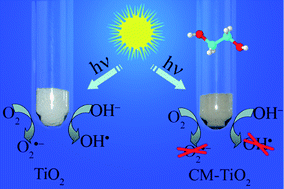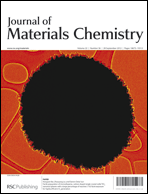Inactivation of TiO2 nano-powders for the preparation of photo-stable sunscreens via carbon-based surface modification†
Abstract
A new protocol based upon the modification of the TiO2 surface by thermal decomposition of ethylene glycol to reduce the ability to generate free radicals leaving unaltered the UV filtering activity has been recently reported by some of us (S. Livraghi et al., Chem. Commun., 2010, 46, 8478). Here we explore the efficacy of three other organic modifiers i.e. ethanol, glycolic acid and citric acid in comparison to ethylene glycol. The ability of the modified powders to generate free radicals was evaluated by means of EPR/spin trapping and probing techniques and the filtering efficacy by UV-Vis diffuse reflectance. The mechanism of inactivation was investigated by EPR spectroscopy and thermogravimetric analysis (TGA) coupled with FT-IR spectroscopy. The results indicate that the treatment with organic modifiers having oxygenated functionalities (hydroxyl or carboxyl groups) in a vicinal position inhibits both reductive and oxidative photocatalytic activity of TiO2 but not the generation of singlet oxygen. The effect may be relatable to the presence of both carbonaceous residues, probably acting as scavengers of free radicals, and carboxylate/carbonate species adsorbed at the surface acting as a protective coating.


 Please wait while we load your content...
Please wait while we load your content...